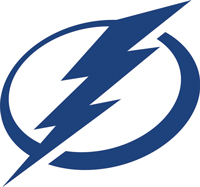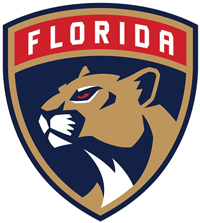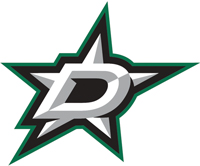The NHL’s history of placing franchises in markets that are not viewed as traditional hockey towns has seen mixed results. The Los Angeles Kings, for example, are the only fair-weather franchise left that was part of the NHL’s expansion efforts half a century ago, when the league grew from six clubs in 1966 to 16 over a period of seven seasons.
The California Golden Seals played in Oakland for nine seasons before moving to Cleveland in 1976, and the Atlanta Flames relocated to Calgary in 1980 after eight years. In the 1990s, the league began to shake things up again, adding a new or relocated franchise in San Jose, Tampa, Miami, Anaheim, Dallas, Phoenix, Raleigh, Nashville and Atlanta (again).
San Jose Sharks (1991)
■ Population in 1991: 1.6 million
■ Arena (opened): SAP Center (1993)
■ Capacity: 17,562
■ First-year avg. attendance in current arena (1993-94): 16,595
■ 2015-16 avg. attendance: 16,747
■ Notes: For their first two seasons, the Sharks played at the Cow Palace in Daly City (11,089), just outside San Francisco, selling out every game. The club has qualified for the playoffs in 18 of the 21 seasons it has played since moving into the SAP Center, including a trip to the Stanley Cup Final last year.
Tampa Bay Lightning (1992)
■ Population in 1992: 2.1 million
■ Arena (opened): Amalie Arena (1996)
■ Capacity: 19,092
■ First-year avg. attendance in current arena (1996-97): 17,412
■ 2015-16 avg. attendance: 19,092
■ Notes: The team played its first season in Tampa’s Expo Hall (10,425). The following three seasons were played in the Florida Suncoast Dome, which is now Tropicana Field (28,153), home of MLB’s Rays. The team has been to the Stanley Cup Final twice in the past 12 seasons, winning it all in 2004.
Florida Panthers (1993)
■ Population in 1993: 4.3 million
■ Arena (opened): BB&T Center (1998)
■ Capacity: 19,250
■ First-year avg. attendance in current arena (1998-99): 18,501
■ 2015-16 avg. attendance: 15,384
■ Notes: The team played its first five seasons at the Miami Arena (14,703). The Panthers reached the Stanley Cup Final in 1996.
Anaheim Ducks (1993)
■ Population in 1993: 2.5 million
■ Arena (opened): Honda Center (1993)
■ Capacity: 17,174
■ First-year avg. attendance in current arena (1993-94): 16,989
■ 2015-16 avg. attendance: 16,337
■ Notes: The team has made the playoffs 10 times in the past 13 seasons and won the Stanley Cup in 2007.
Dallas Stars (1993)
■ Population in 1993: 4.3 million (Dallas); 2.7 million (Minneapolis)
■ Arena (opened): American Airlines Center (2003)
■ Capacity: 18,532
■ First-year avg. attendance in current arena (2001-02): 18,532
■ 2015-16 avg. attendance: 18,377
■ Notes: While in Minneapolis as the North Stars, the team played in the 15,000-seat Met Center. After moving to downtown Dallas, the Stars played their first eight seasons at the 17,001-seat Reunion Arena, selling out every game. The Stars reached the Stanley Cup Final in 1999 and 2000, winning it in ’99.
Arizona Coyotes (1996)
■ Population in 1996: 2.9 million (Phoenix); 684,000 (Winnipeg)
■ Arena (opened): Gila River Arena (2003)
■ Capacity: 18,300
■ First-year avg. attendance in current arena (2003-04): 15,467
■ 2015-16 avg. attendance: 13,350
■ Notes: Formerly the Winnipeg Jets, the Coyotes played their first seven seasons at US Airways Center (capacity 16,210), a venue they shared with the Suns and Mercury.
Carolina Hurricanes (1997)
■ Population in 1997: 1.1 million (Raleigh); 1.1 million (Hartford, Conn.)
■ Arena (opened): PNC Arena (1999)
■ Capacity: 18,680
■ First-year avg. attendance in current arena (1999-00): 12,400
■ 2015-16 avg. attendance: 12,204
■ Notes: Formerly the Hartford Whalers, the team played its first two seasons at Greensboro Coliseum (21,273), 75 miles from Raleigh. The Hurricanes won the Stanley Cup in 2006 but have made the postseason just once in the decade since. Even in its championship-winning season, the team only filled 83 percent of its seats, and has had the lowest overall attendance in the league during the past two-plus seasons.
Nashville Predators (1998)
■ Population in 1998: 1.3 million
■ Arena (opened): Bridgestone Arena (1996)
■ Capacity: 17,113
■ First-year avg. attendance in current arena (1998-99): 16,202
■ 2015-16 avg. attendance: 16,971
■ Notes: The Predators have made the playoffs nine of the last 12 seasons, though they’ve never advanced past the conference semifinals.
Atlanta Thrashers (1999-2011)
■ Population in 1999: 4.2 million
■ Arena (opened): Philips Arena (1999)
■ Capacity: 18,545
■ First-year avg. attendance in current arena (1999-00): 17,206
■ Last-year avg. attendance (2010-11): 13,469
■ Notes: The Thrashers were the league’s second attempt in the market, following the Flames’ eight-year stint from 1972 to 1980. The Thrashers struggled to fill seats in the arena, filling less than 75 percent of seats during their final three seasons, and moved to Winnipeg in 2011.
Note: Years are when teams began play.
Source: SportsBusiness Journal












